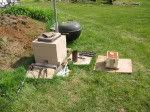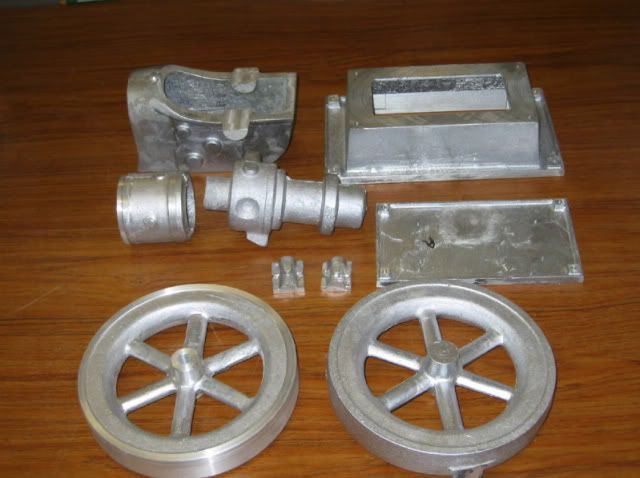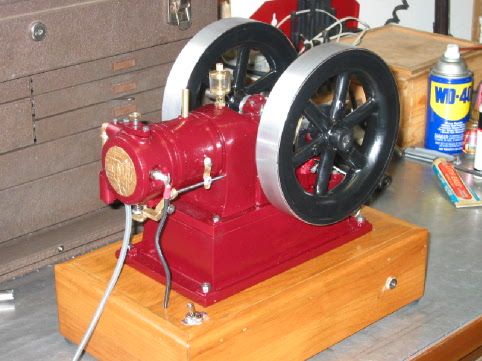Glass is funny stuff.. it's basically a very stiff liquid at room temperature, and the more you heat it, the runnier it gets, sort of like molasses. You can squash a wine bottle flat by its own weight with 20 minutes at about 1100-1300'F, but it will act like wet leather. Flassblowers can't do the dip-n-swirl thing until glass is over 2200F or more. A pile of broken glass will glue the shards together around 1200'F, but they'll still be pretty sharp. It won't turn into a uniform glob-o-glass until 1600+
What you will run into with glass is devitrification (the crystallizing of the glass, which looks like a whiteish scum)-- happens above 1300-1400F, and if you want to do anything useful with the glass after you melt it, you have to very carefully and slowly anneal it while cooling so it doesn't break-- the thicker the glass the longer you have to cool.
I do 'warm' glass work in a kiln around 1450', and AL melts well below that (sandwich a piece of alu can between a couple pieces of glass and run it up to 1400 and the Al turns into a mass of brown bubbles encased in glass). My kiln goes to 2000, and that's at the very low end for brass-- I have several test pieces of glass with unmelted brass encased in them.
Now there's also a ton of different things called 'glass' too-- those numbers above are for typical window/bottle glass, while pyrex/borosilicate has a different temperature curve (and is easier to work in a flame) while other glasses like quartz can act differently too.
What you will run into with glass is devitrification (the crystallizing of the glass, which looks like a whiteish scum)-- happens above 1300-1400F, and if you want to do anything useful with the glass after you melt it, you have to very carefully and slowly anneal it while cooling so it doesn't break-- the thicker the glass the longer you have to cool.
I do 'warm' glass work in a kiln around 1450', and AL melts well below that (sandwich a piece of alu can between a couple pieces of glass and run it up to 1400 and the Al turns into a mass of brown bubbles encased in glass). My kiln goes to 2000, and that's at the very low end for brass-- I have several test pieces of glass with unmelted brass encased in them.
Now there's also a ton of different things called 'glass' too-- those numbers above are for typical window/bottle glass, while pyrex/borosilicate has a different temperature curve (and is easier to work in a flame) while other glasses like quartz can act differently too.








